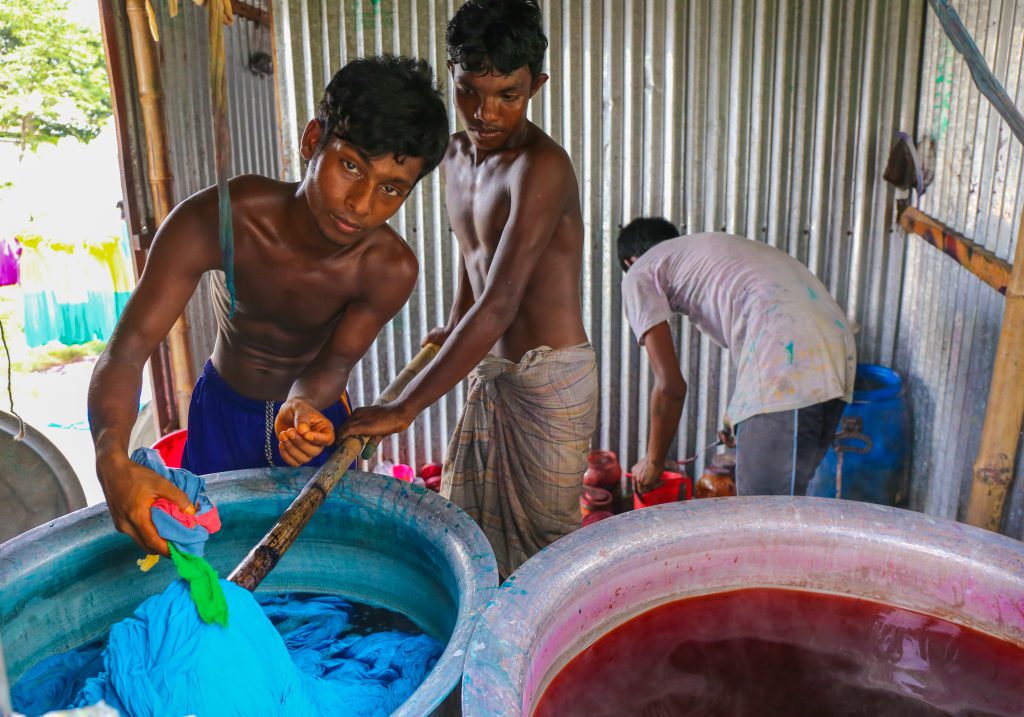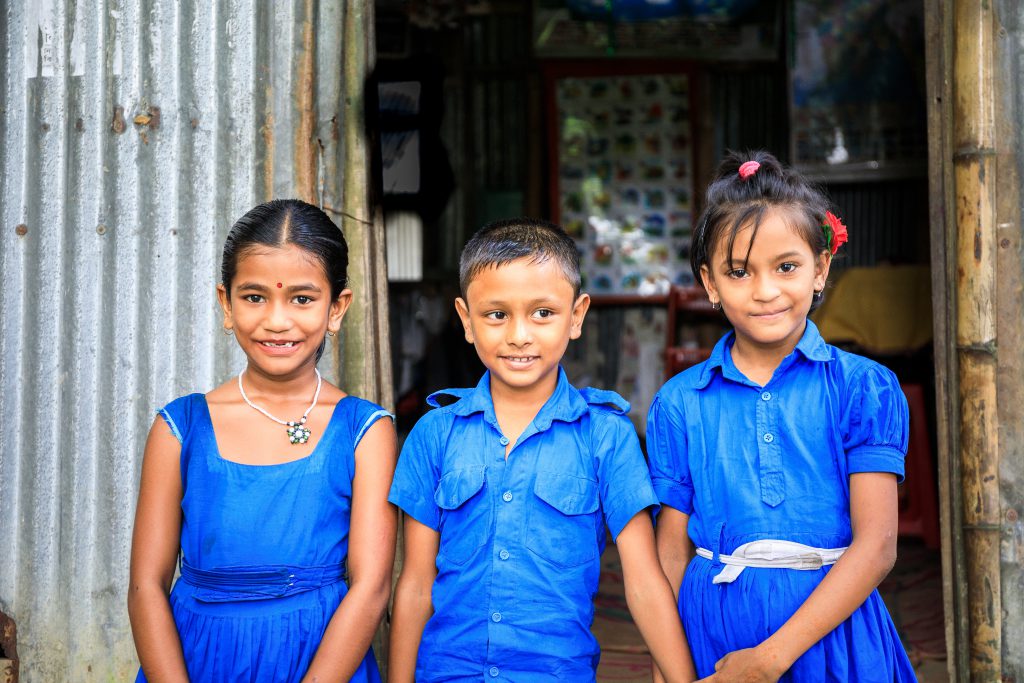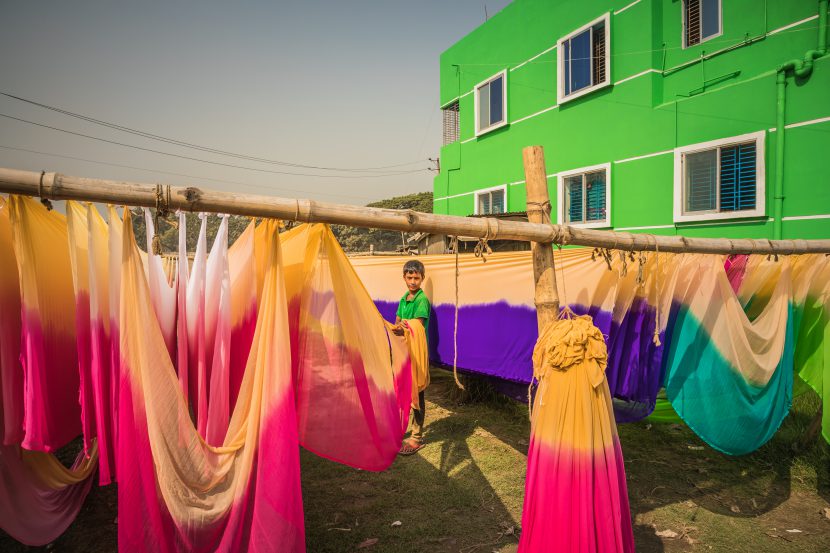At first glance, one might struggle to see the link between fast-fashion and children’s rights. However, the fashion industry is not ‘just’ about clothes. On the one hand, it heavily relies on child labor, violating children’s right to education, freedom and protection. On the other, it bears the human, health and social cost of being the second most polluting industry, with environmental consequences that violate the right to a safe and healthy environment for many children.
An overview of the problem
Fast-fashion is a business model that began in the 1990s as part of the general movement towards globalization and consumerism. The word ‘fast’ describes the main mechanism behind this new practice: to have ever-so inexpensive clothes readily available and easily replaced. Just to quantify such description, since the 2000s the production of garments has doubled, reaching 100 billion pieces per year and offering a new collection every week (UNDP, 2019).
In order to be able to produce this much at an unrealistically low price, multinationals started competing for a ‘race to the bottom’. That is, they started looking for ever cheaper sources of both labor and raw materials, to the detriment of employees, their safety and the environment.
Fast-fashion and child labor
The growing demand for affordable clothing that comes with the ‘democratization’ of fashion has led Western companies to turn to countries such as India, Pakistan and Bangladesh for more competitive prices. This, in turn, has put pressure on producers in low-to-middle-income countries to be able to satisfy requests for increasingly low prices and so resist the competition. In order to do so, subcontractors have cut the spending at every stage of the fashion supply chain, which has resulted in excessively low wages and safety standards, and the reliance on child labor.
The UN defines child labor as “work for which the child is either too young or work carried out to the detriment and endangerment of a child” (United Nations, 2021). The conventions of the International Labor Organization (ILO) as well as the SDGs, establish a series of principles that aim to effectively abolish all forms of child labor, including slavery, prostitution and use for other illicit activities.
Despite a decline in child labor between 2000 and 2012 (The Guardian, 2017), in the last four years there has been a rise of 8.4 millions (UN News, 2021). As of 2021, 160 million children are still engaged in activities that deprive them of their right to education, proper care and nutrition, and overall, of their right to be children.
Of the 11% of children that are accounted as being illegally forced to work, many are employed by the fashion sector (The Guardian, 2017). Indeed, because of their smaller hands, children are particularly suited for tasks requiring precision and delicacy, such as cotton picking or sewing, making them even more vulnerable to being exploited in the apparel industry.
Moreover, in the developing countries where most products of fast-fashion are produced, children represent a ‘business opportunity’ for contractors in search for low-skilled workers who can be paid way below the minimum wage and easily forced to work due to the vulnerability that comes with their young age. Because of a lack of controls, including workers unions, and because of the complexity of the fast-fashion supply chain, employers often get away with engaging in such practice, and companies as well as consumers are hardly able to track where and how the final product has been made.
Child labor is a direct consequence of extreme poverty. Families living way below the poverty line are often forced to rely on their children to survive, putting them to work as young as five years old (UN News, 2021). The lack of education and proper care that these kids suffer fuels, in turn, the so-called ‘poverty trap’ (Borgen Magazine, 2020). That is, a vicious cycle where children are not provided with the means and opportunities to escape poverty, causing their offspring to remain in the sector and face once again its hazardous effects.
Children’s environmental rights
If on the one hand, working 14 to 16 hours a day in hazardous conditions violates children’s right to schooling and freedom, on the other, the detrimental effects of fast-fashion also violate their right to a safe and healthy environment.
The fashion industry is one of the most polluting, second only to the oil sector (UN News, 2019). With the production of 800 billion new pieces of clothing per year, it accounts for 10% of global carbon emissions and generates externalities at each step of its supply chain (Baptist World Aid Australia, 2019). From the growing of cotton seeds to packaging and final disposal of clothes, the apparel industry costs the environment way too much.
Garments are usually made of either cotton or synthetic fibers: the former is extremely water-intensive and relies on heavy pesticides, while the latter is responsible for 35% of microplastics polluting our oceans (UNDP, 2019). This amounts to 93 billion cubic meters of water per year and three million barrels of oil (UN News, 2019).

Besides water consumption and pollution, as clothes are frequently sewed, dyed and sold in different countries, their production as well as distribution, generates enormous greenhouse emissions. Lastly, fast-fashion is based on the idea that clothes are thrown out as easily as they are bought. As a consequence, 21 billion tons of garments end up in landfills every year (UNECE, 2018), with only 12% of it being recycled (UNDP, 2019).
For these reasons, fast-fashion is creating an environmental justice dilemma. As it often happens, it is the poor and most vulnerable that most suffer the consequences of climate change and environmental destruction. The apparel industry is violating environmental rights of both workers and surrounding communities throughout the entire lifecycle of clothes.
The mental and physical health of children living close to landfills or factories, or worse, working in the supply-chain of fast fashion, are compromised by its externalities. This is an unacceptable violation of children’s as well as human rights, and we must do something about it.
What can be done?
With Covid-19 endangering the progress made in the most vulnerable regions, the figures regarding child labor have worsened in the past year (UN News, 2021). States and organizations should therefore start acting on the problem immediately to ensure the realization of Target 8.7 of the SDGs working towards the goal that all forms of child labor are eliminated by 2025. As far as the environmental consequences of fast-fashion are concerned, data warns us that, if the practices don’t improve, the greenhouse gas emissions from the apparel sector will rise by 50% in 2030 (UN News, 2019).
Good news is that there are organizations working to end child labor and to hold multinationals accountable for their supply chains violating environmental standards and human rights. There are also many ways in which any of us can contribute to a positive change, for example by getting informed and starting to make more conscious and ethical choices.
Humanium is committed to protecting children’s rights and has worked on projects specifically to target child labor. More specifically, Humanium has helped open a special-training center for former child laborers in India where this practice is still very common, offering children tailored educational, physical, mental and emotional support, and ultimately reintegrating them into public schools.

Moreover, together with our partner organizations, we are working on safeguarding the rights of all children to education and to a safe and healthy environment. If you would like to participate in Humanium’s endeavors towards the realization of children’s rights around the world, subscribe to our newsletter and become a member.
Written by Chiara Baruta
Bibliography:
UN News. (2019, March 25). UN launches drive to highlight environmental cost of staying fashionable.
UNDP. (2019, September 17). Six things you didn’t know about the true cost of fast fashion.
United Nations. (2021, June 12). World Day Against Child Labour 12 June.
The Guardian. (2017, May 22). Child labour in the fashion supply chain .
Borgen Magazine. (2020, October 11). Child Labor Amid the Rise of Fast Fashion.
UNECE. (2018, March 1). Fashion and the SDGs: what role for the UN?


